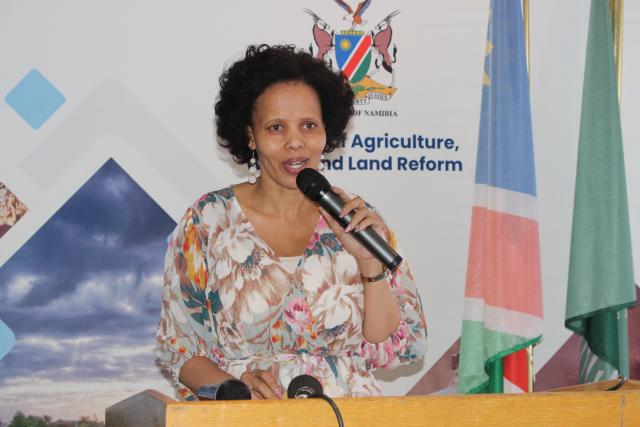Despite facing numerous challenges, staff members at the Khorixas District Hospital persevere to deliver health services to the community.
The hospital, which was built in 1979, serves a total population of 20 626. This includes 3 506 children under the age of five and 618 babies under the age of one.
According to the hospital’s acting senior medical superintendent, Dr Ester Jatileni, in addition to Khorixas with a population of 11 530, the hospital also caters for Fransfontein – situated 30 kilometres away, Anichab – 90km away, Bergsig – 120km away and Terrace Bay – 625km from the town.

Jatileni on Tuesday took Japanese ambassador to Namibia Hisao Nishimaki and United Nations International Children’s Emergency Fund (Unicef) country representative Samuel Ocran on a tour of the hospital, with the help of acting matron Amase Jane-Gaweses and Khorixas mayor Patience !Hoaes.
During the tour, Jatileni addressed the rising concern of paediatric admissions.

“In 2021, we had 208 admissions, with three deaths and seven referrals; in 2022, the admissions rose to 350 and two deaths; in 2023, admissions shot to 475 with three deaths and in 2024, there has been 350 admissions with two deaths.”
Meanwhile, matron Jane-Gaweses told the delegation the hospital does not have a functional ambulance.
“The one we had broke down and and now, when we have referrals to Windhoek, we ask the Outjo hospital.”
There are also not enough beds and the few beds at the hospital are without mattresses. This is despite most wards in the 121-bed hospital being empty.
The three delivery rooms in the 24-bed capacity maternity ward do not all have beds. Nurses have to move beds from one labour room to another as the need necessitates.
One delivery bed was covered with a torn plastic sheet, which Gaweses said they disinfect after use by one patient in readiness for use by the next.
Jane-Gaweses said they cannot discard the torn plastic sheet in order to protect the mattress from being soiled.
There was only one bed in the acute room for emergencies, instead of four, and the staff have no secure facilities to store medicine, she added.
Acting chief administrative officer Tueuvazako Hariregetting said effecting repairs is challenging because the hospital runs on petty cash of N$500, with most of its budgeting being done at the head office in Windhoek.
Some wards do not have running water, necessitating some improvisation by both nurses and patients, said Jane-Gaweses.
!Hoaes said while the local authority supplies water to the hospital, the hard water at the town corrodes the pipes and repairs are not effected in a timely manner by the responsible ministry.
“As the council, we always try to supply the hospital with water but once the pipes break, we have to cut off supply until they are repaired,” she said.
To compound the hospital’s problems, the original plastic tiles in most wards are worn out, which means wheeling beds around has become a nightmare.
Ocran said Unicef is committed to supporting the government in implementing programmes that benefit children.
“We came here to assess and explore opportunities to offer support,” he said.
Nishimaki urged the health workers at the hospital to persevere, despite the challenges.
“Although we have not pledged any assistance today, we urge patience as there are steps we follow, including discussions with partners and asking headquarters to provide support,” he said.

Stay informed with The Namibian – your source for credible journalism. Get in-depth reporting and opinions for
only N$85 a month. Invest in journalism, invest in democracy –
Subscribe Now!










